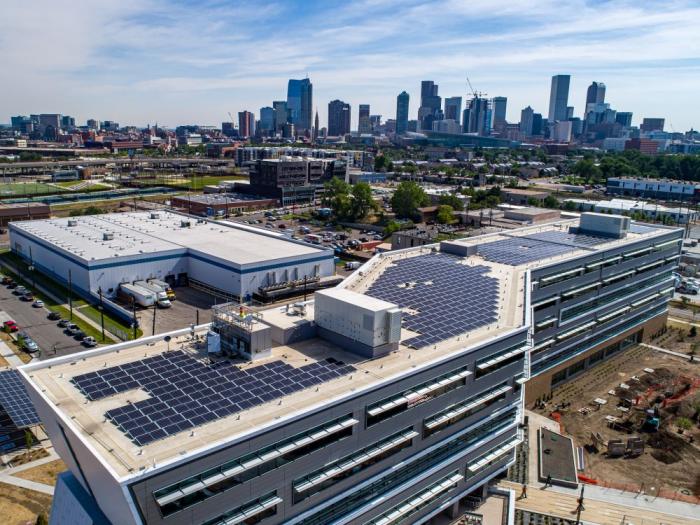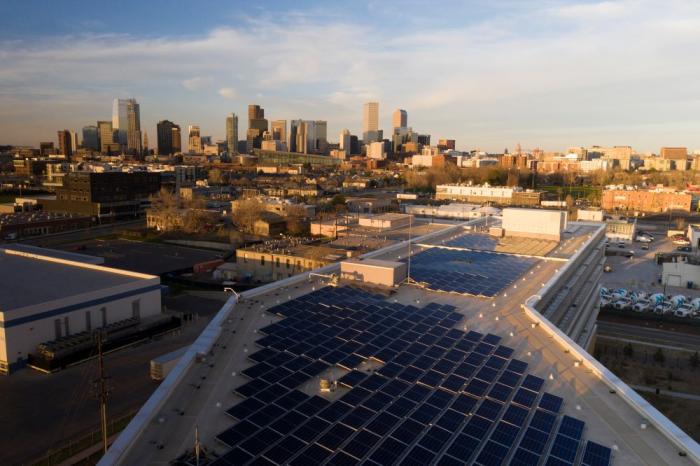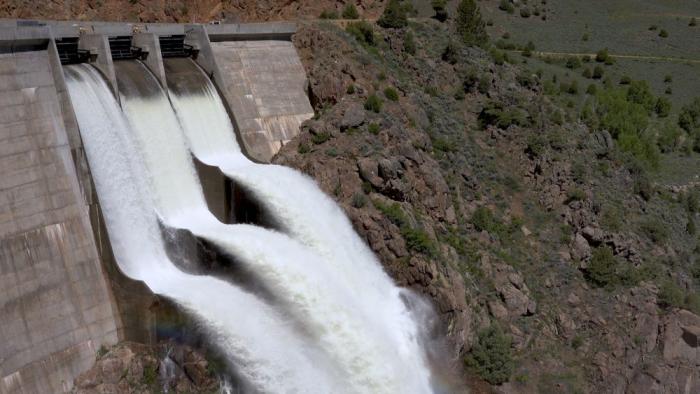Battling climate change with solar, hydro and a shifting fleet
Denver Water sits on the front lines of climate change.
Rising temperatures, long-term drought and less dependable snowpack are all making the job of providing water to 1.5 million people tougher.
In response, the utility is preparing for a future with a less consistent water supply for its customers, through innovations including greater efficiency, One Water and new storage projects such as the Gross Reservoir expansion.
Learn more about how the Gross Reservoir Expansion Project makes us more resilient in the face of climate change with greater water security.
The utility also is moving aggressively to cut its own carbon footprint, striving to meet goals for producing renewable energy and reducing dependence on energy sources tied directly to warming temperatures.
In 2020, Denver Water met an organizational goal for “net zero” annual energy consumption. That’s a fancy way of saying it produced as much or more energy than it consumed, and that its energy was generated using carbon-free sources: hydropower and solar power.
To be precise, the utility produced roughly 1.5 million more “kilowatt-hour equivalents” than it used in 2020.
The utility’s solar power panels and hydropower generators produced enough clean energy to account for not only its electricity use but also the natural gas it uses for heat. Natural gas burned to supply heat is an energy category that’s not always factored into “net zero” calculations, but Denver Water made a point of including it to create a stretch goal for its effort.
“Several years earlier, we had set a goal to hit ‘net-zero’ as a benchmark for our sustainability efforts,” said Kate Taft, Denver Water’s sustainability manager. “Hitting that in 2020 was the result of a lot of focused, dedicated work across the organization and represents an important milestone in the utility’s long history of environmental progress.”
Net-zero is a big deal in the era of climate change.
Learn more about how Denver Water has leaned into the challenge of climate change and how its work to track emissions has been recognized by outside experts.
Many major corporations are striving to attain the status, including companies such as Coca-Cola and General Motors. Many companies and governments have set net-zero goals for 2030 and 2040, for example.
Denver Water got there sooner. Though, to be sure, Denver Water benefits from — wait for it — water in this endeavor.
Hydroelectric power is generated at seven locations in Denver Water’s 4,000-square-mile collection area. That includes power generated at reservoirs but also at places like Roberts Tunnel, where the energy of water moving downhill through a tunnel that traverses the Continental Divide creates electricity.
All told, Denver Water’s hydropower operations generate about 65 million emission-free kilowatt-hours per year. That translates to about the amount of electricity consumed by 6,000 homes for a year.
While Denver Water generated hydropower for decades and is continuing to look for additional opportunities to generate power from moving water, including at its Northwater Treatment Plant currently under construction near Golden, the addition of solar power to its renewable energy portfolio is more recent.
At the utility’s newly redeveloped Operations Complex, completed in 2019, solar power panels on the roof of the Administration Building and atop parking structures generated more than 1 million kilowatt hours of electricity in 2020. That offset the Administration Building’s use with more than 300,000 kilowatt-hours to spare.
That’s extra clean electricity that can go back into the grid for use by others.
And in Denver Water’s new sustainability goals issued in 2021, the utility set a new target for itself: to increase its capacity to generate renewable energy by 1 megawatt and to reduce its greenhouse gas emissions by 50% from a 2015 baseline.
How much is that 1 megawatt? Roughly, it would be like adding another solar array about the size of the one at the Operations Complex. Or, like adding the hydropower capacity that now exists at Strontia Springs Reservoir, situated 6 miles up Waterton Canyon southwest of Denver.
Even as it works to add more green power, Denver Water may not always be able to meet its net-zero goal, at least in the short term.
That’s because maintenance projects at times take hydroelectric facilities off-line or reduce their capacity. For example, for the next five years, Gross Reservoir will generate less power because its storage space for water will be cut by about one-third while a dam-raising project proceeds.
However once that project is completed, and the capacity of the reservoir is tripled, the location is expected to be a greater source of clean energy, increasing its production capacity by nearly 15% compared to its capacity before the project.
In 2021, too, Denver Water fell short of its goal due in part to work on the hydroelectric facility at Roberts Tunnel. Work to upgrade the hydro facility at the tunnel kicked off in 2019.
Finally, while Denver Water focuses on offsetting electricity and heat generated by fossil fuels such as coal and natural gas, its net-zero calculations don’t currently count gasoline burned by its fleet vehicles or propane needed at some remote sites.
“As we make a long-term shift to cleaner energy sources, there will be bumps in the road,” Taft said. “We still, inevitably, will depend on more traditional sources at times and in certain locations. But we are relentlessly pushing to generate more of our own green energy and cut emissions associated with natural gas, coal and vehicles.”
Learn more about how Denver Water has constructed a low-energy heating and cooling system and its long history of environmental stewardship.
As part of its effort to cut emissions, Denver Water is beginning the long transition to electric fleet vehicles.
The utility already has six Ford F-150 hybrid trucks and hopes to test the use of some all-electric pickups in 2023, pending supply chain challenges.
And as the utility continues to look at other electric vehicle options, it is partnering with analysts at Drive Clean Colorado and Xcel Energy’s Fleet Electrification Advisory Program to help guide the process.
“Getting this right will take time and a constant push forward,” said Brian Good, Denver Water’s chief administrative officer. “But it is the right thing to do. We are a water utility, and providing reliable, safe, clean water isn’t possible without protecting the natural environment from which it flows.”




